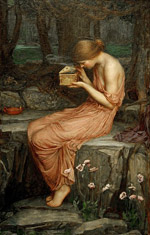Psychology, Department of

Department of Psychology: Faculty Publications
ORCID IDs
Document Type
Article
Date of this Version
10-2012
Citation
Archives of Sexual Behavior 41:5 (October 2012), pp. 1199–1208.
doi: 10.1007/s10508-012-9927-5
Abstract
Few studies have focused on intragroup variations in sexual orientation and fewer on self-identified heterosexuals with same-sex attractions, fantasies, and/or behaviors. Self-identified heterosexual students at a large public midwestern university (N = 263) completed measures of sexuality and gender, attitudes toward lesbian, gay, and bisexual (LGB) people, religious and political beliefs, emotional well-being, and demographics. The sample included 82 individuals (31%; labeled “H+”) who endorsed same-sex attraction, fantasy, and/or behavior and 181 (69%; labeled “H”) who did not. Women were more likely to be categorized as H+ than men. H+ participants had more positive attitudes toward lesbians and gay and bisexual men and reported more support for LGB-positive public policies than did H participants. H+ participants reported less literalistic beliefs about religious scripture than did H participants. H and H+ groups did not differ significantly on measures of emotional well-being. Results were discussed in the context of recent literature arguing for a more nuanced and gender-differentiated approach toward assessing sexual orientation, as well as literature on the flexibility of sexual orientation and on heterosexual identity development.


Comments
Copyright © 2012 Springer Science+Business Media, LLC. Used by permission.